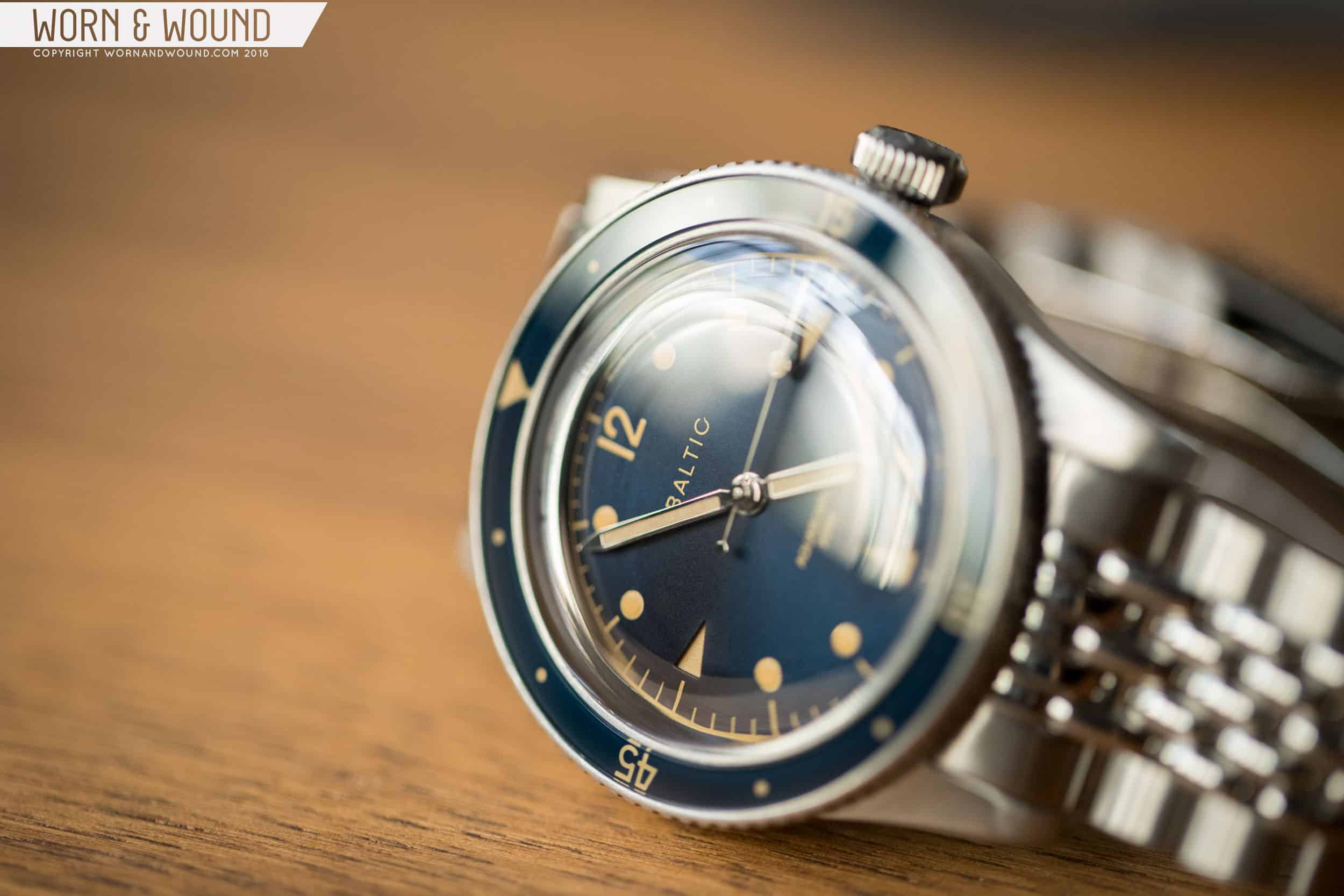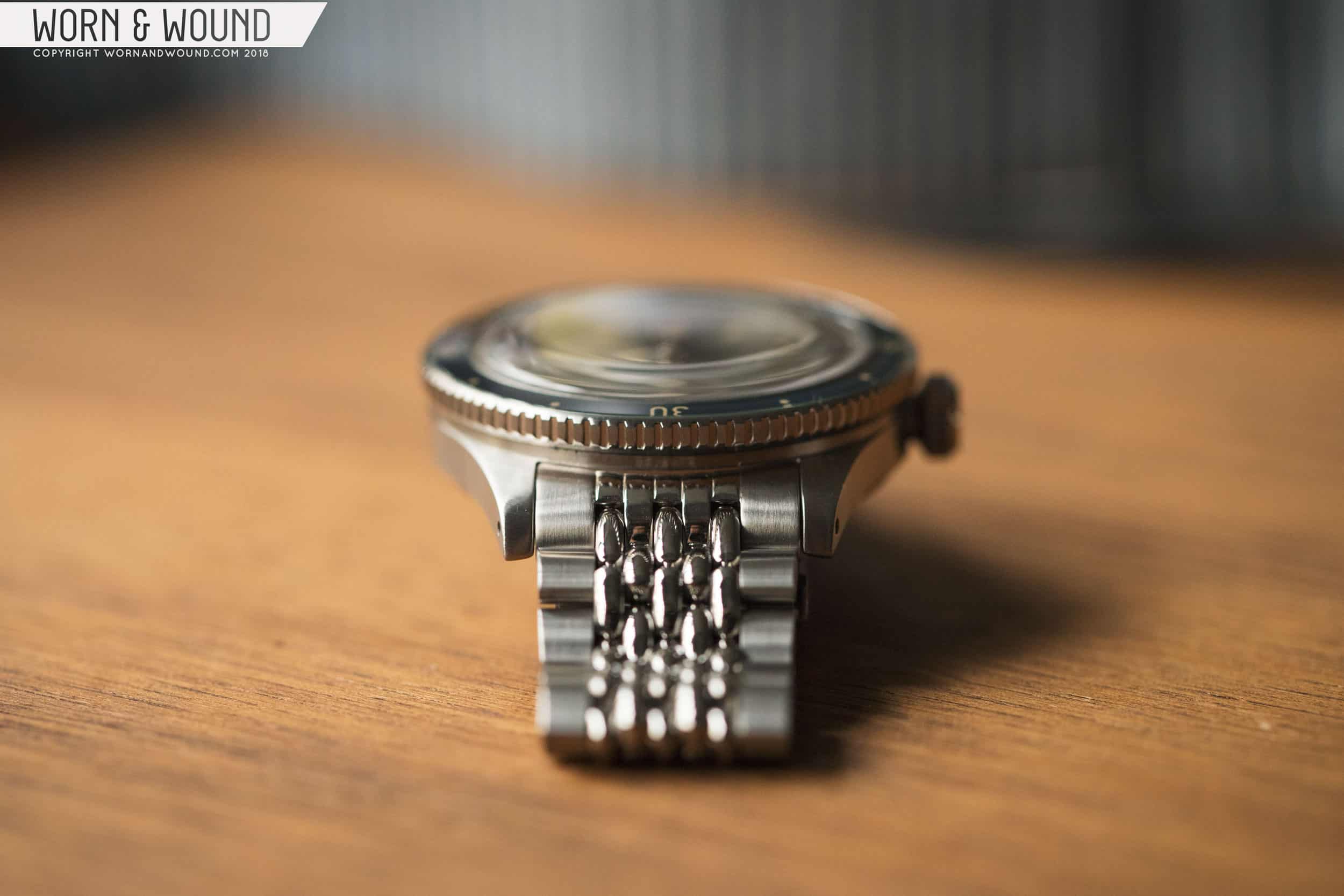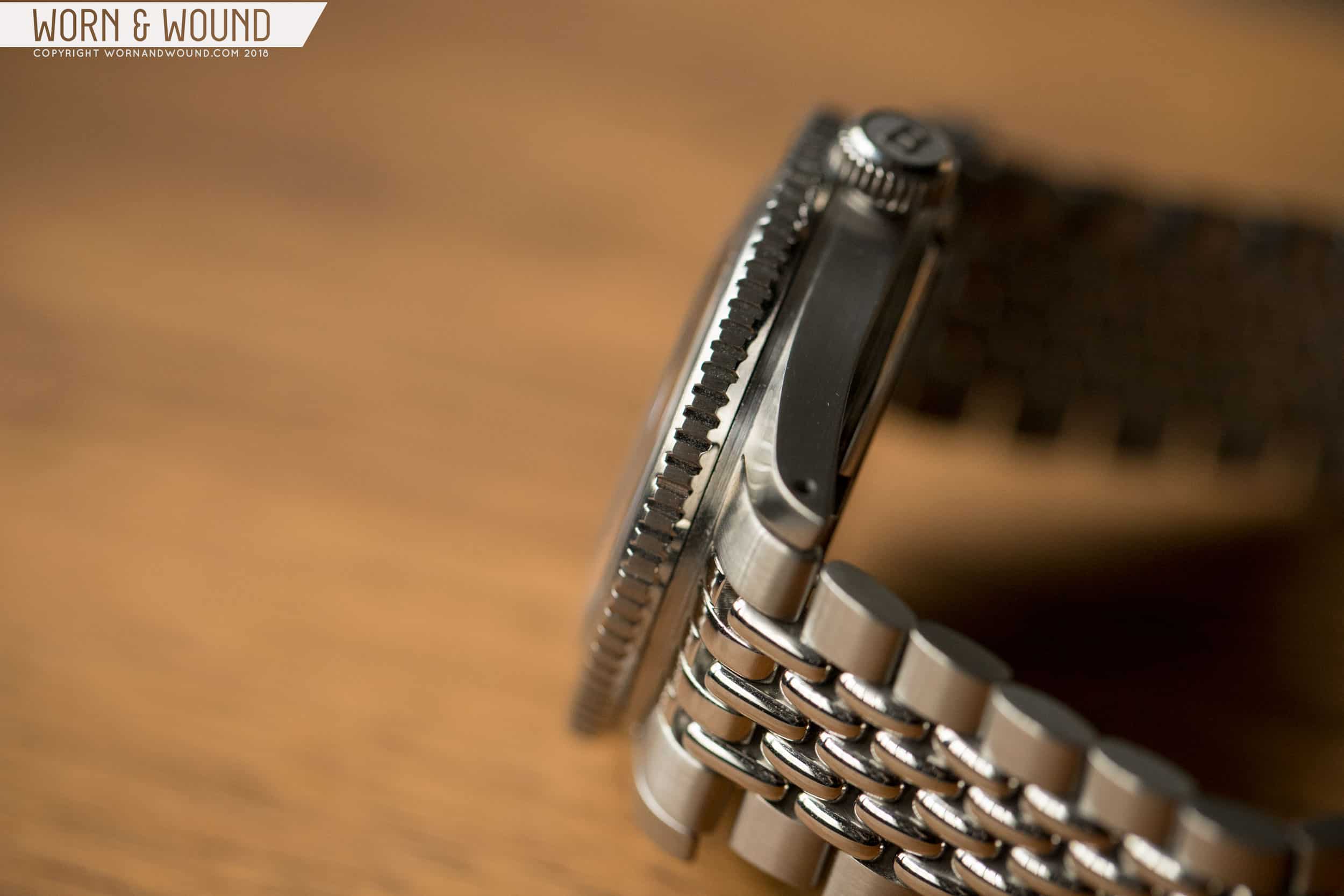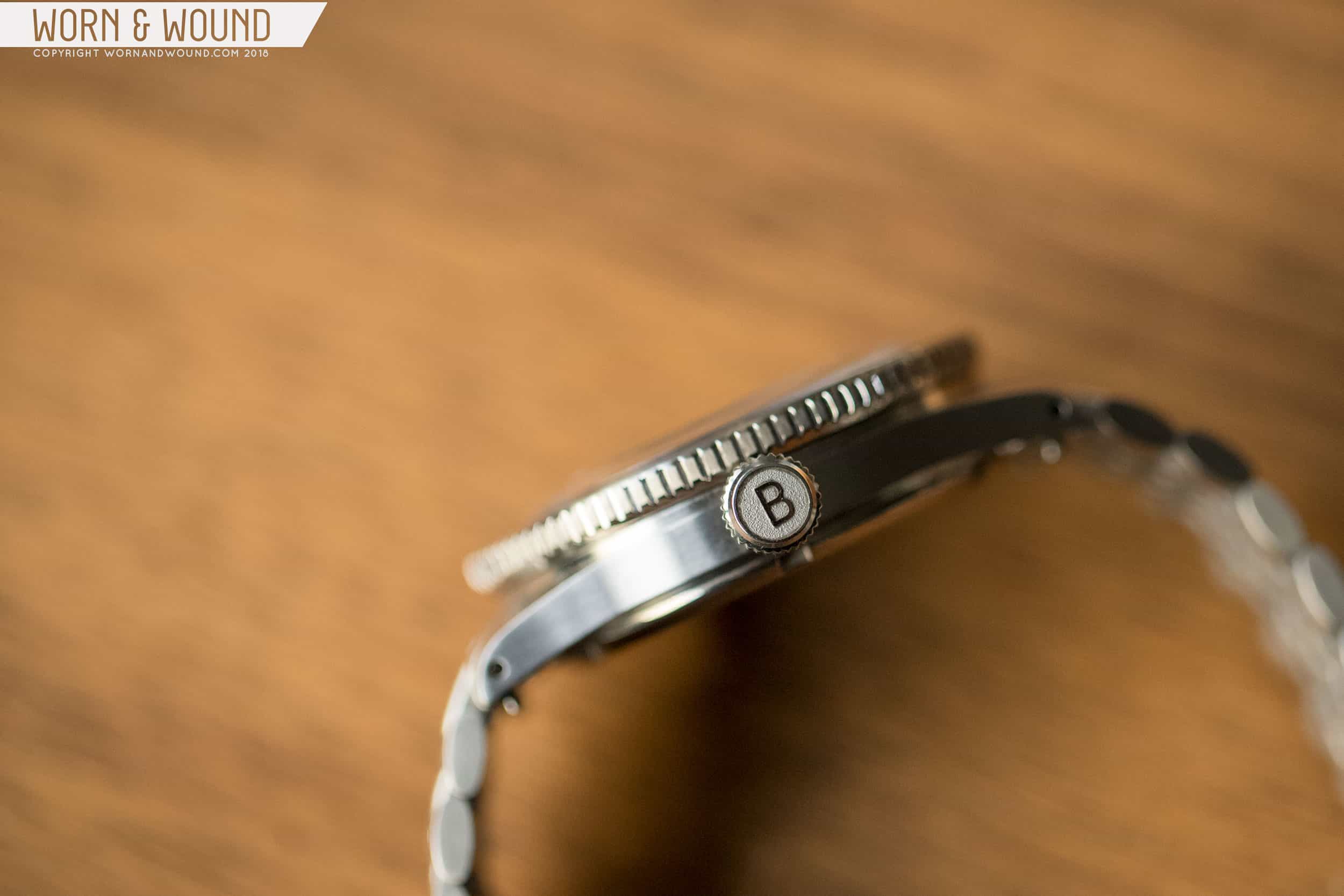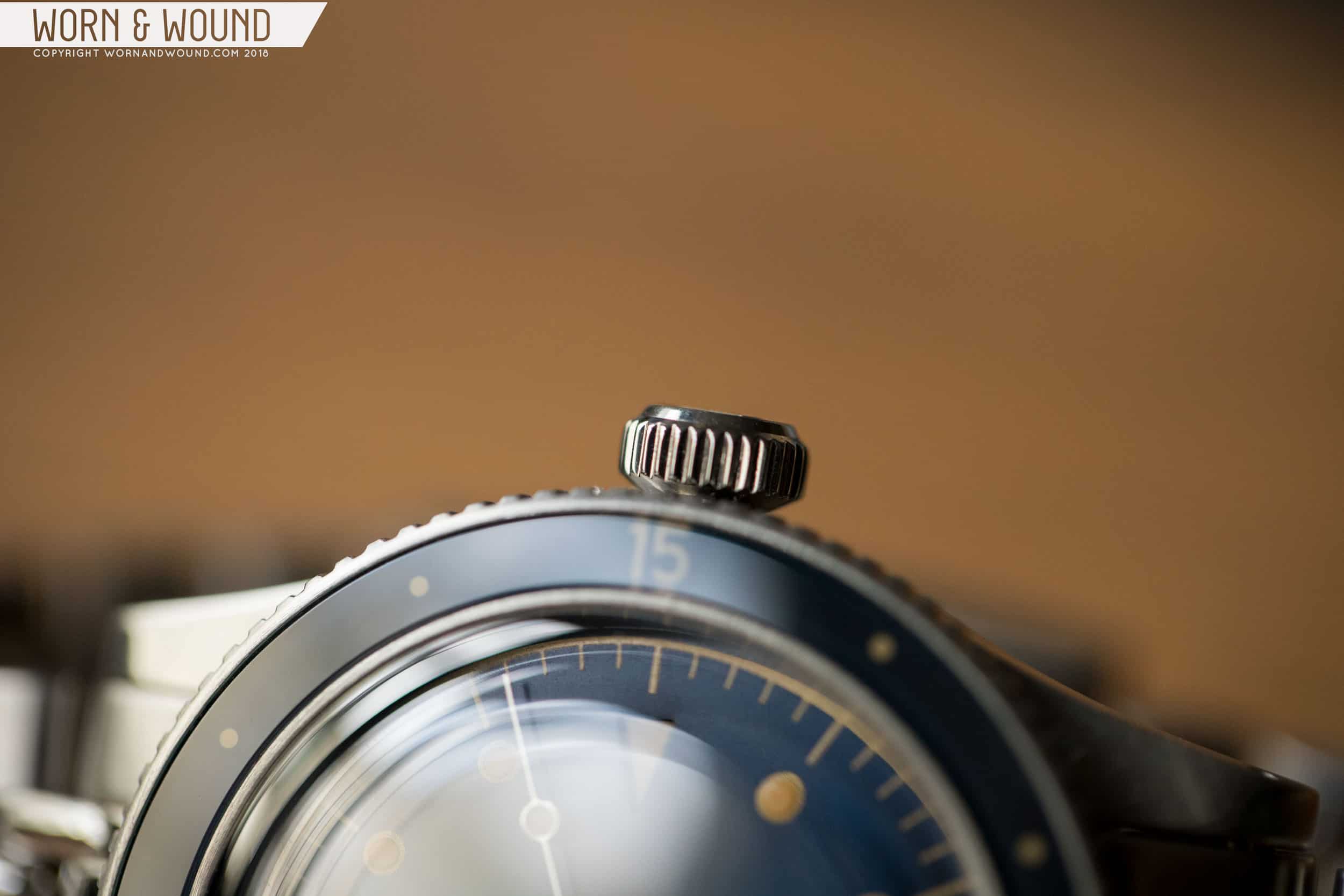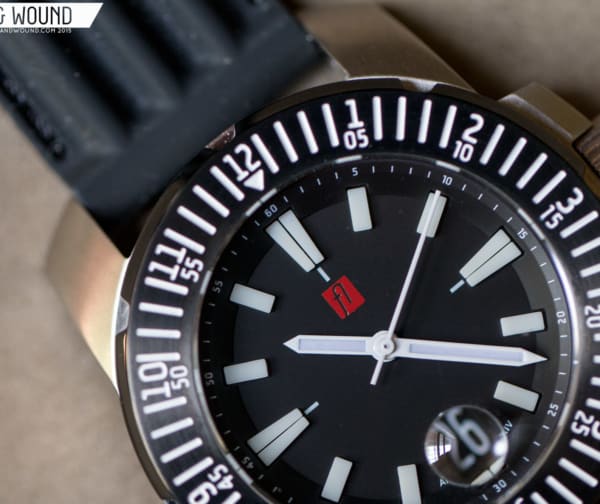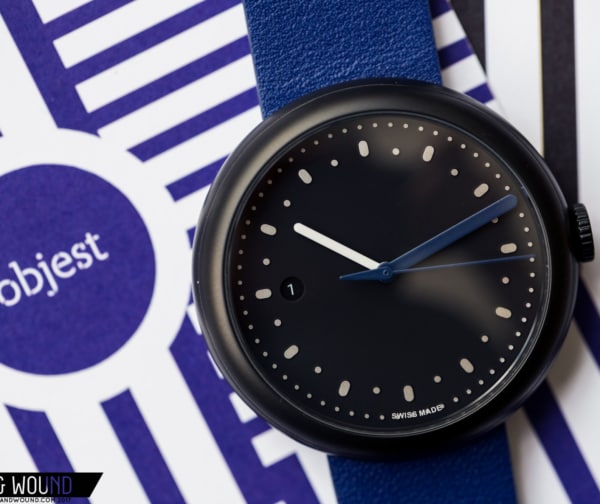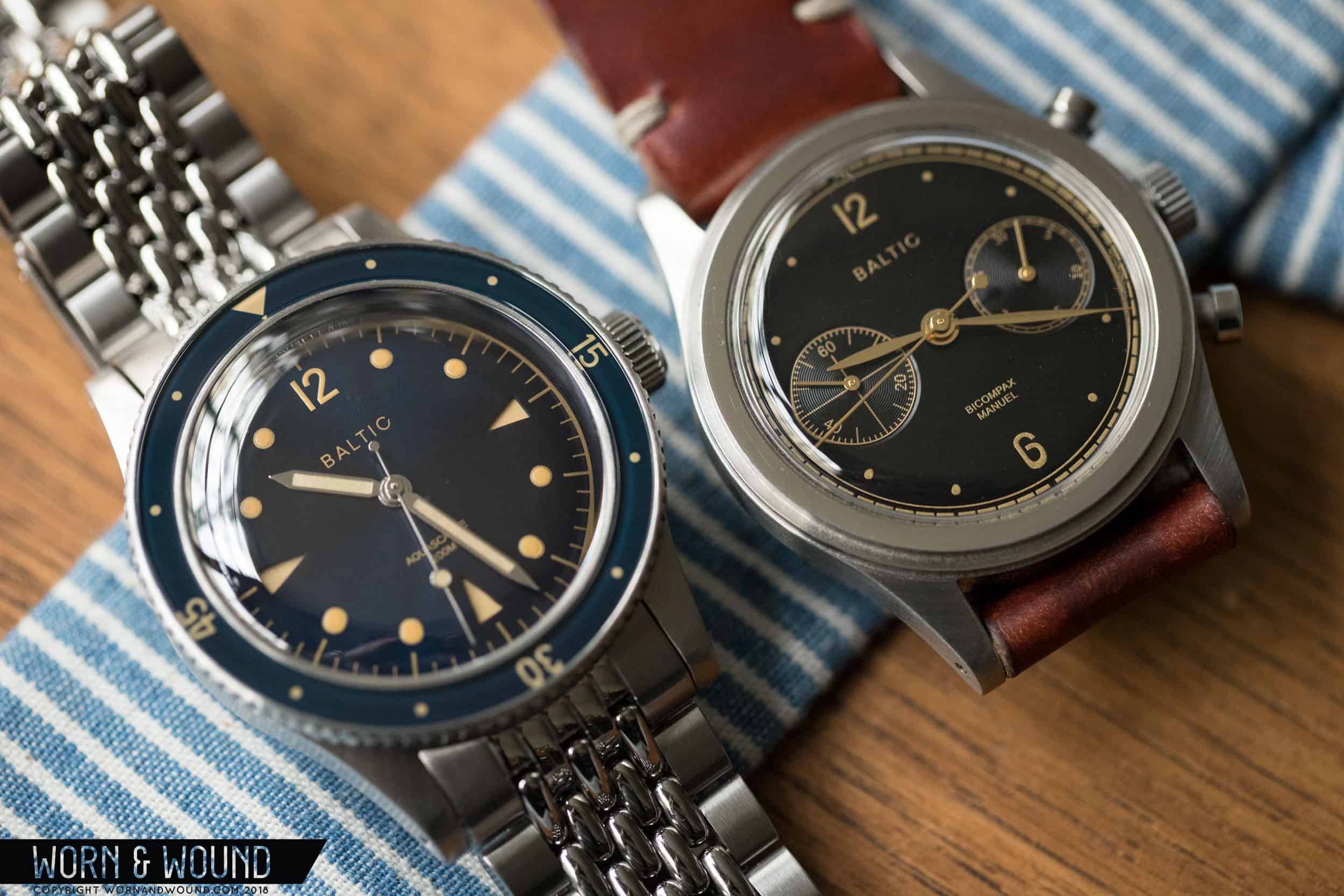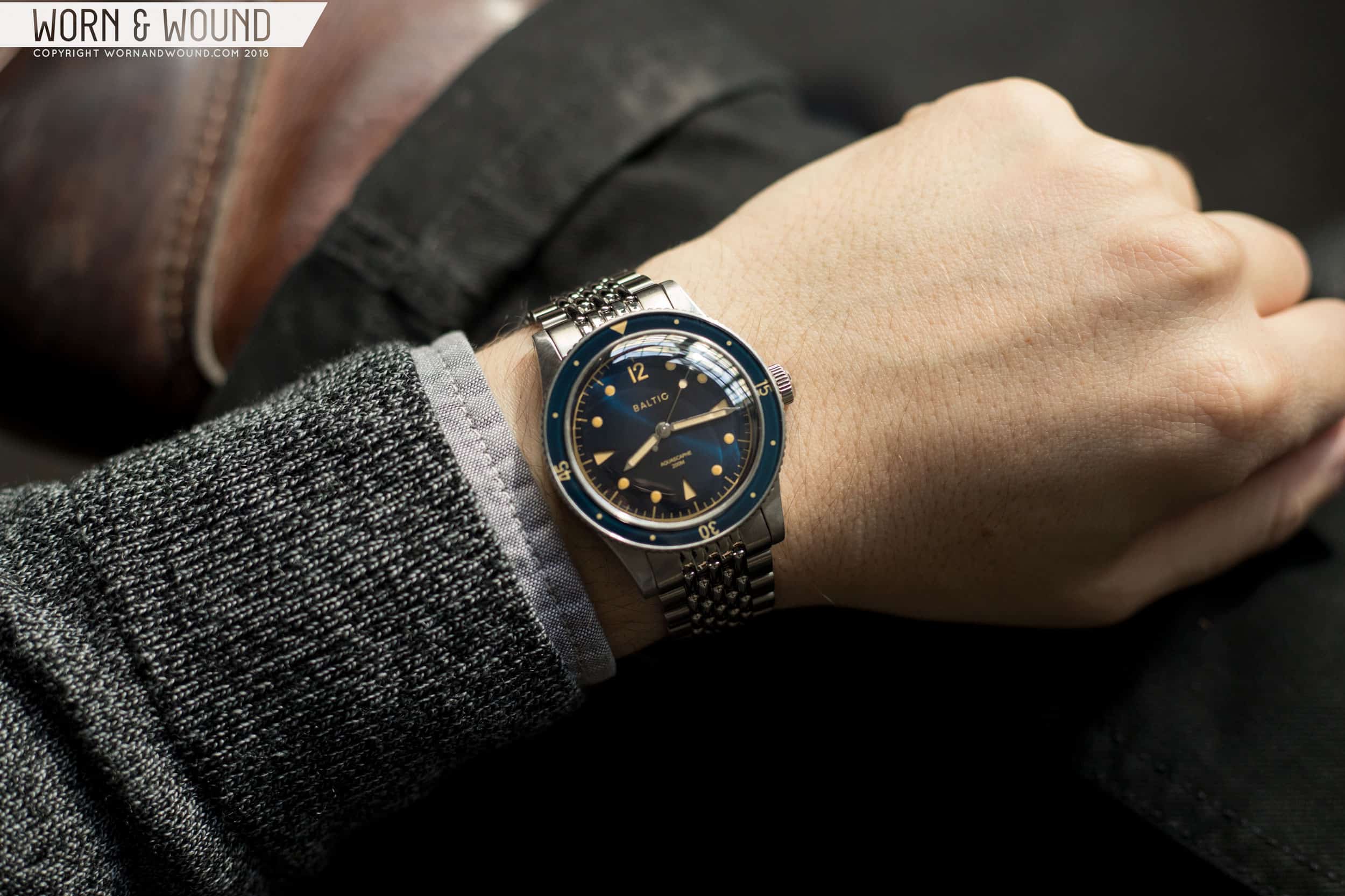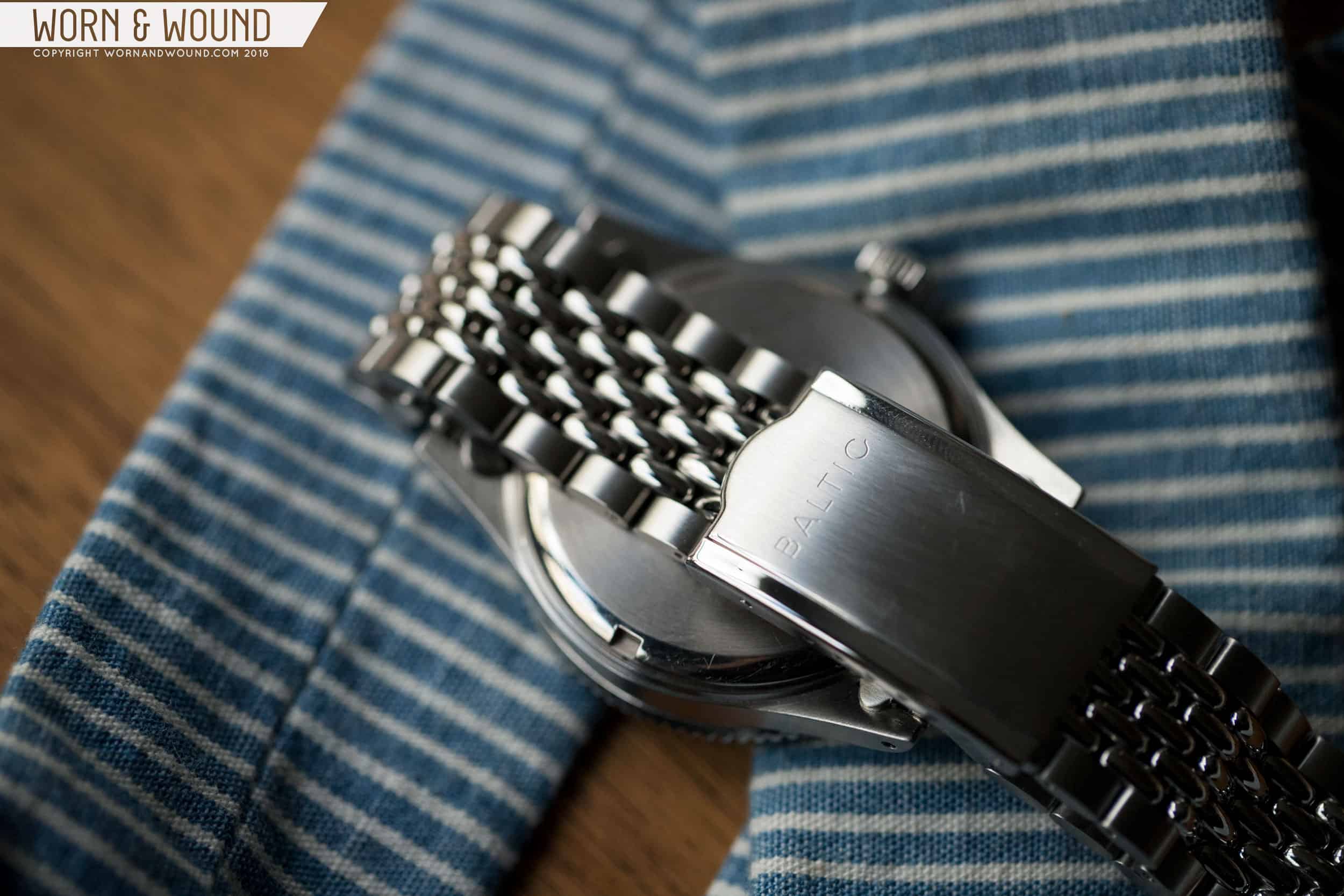When Baltic released their Bicompax chronographs last year to great fanfare, I don’t think they imagined the challenge they would be creating for themselves. How do you follow up a hit track when expectations are already at such a high? Some brands just wouldn’t bother—not for a while at least. They’d permutate that success until they exhausted it. But Baltic, except for one set of limited edition chronographs that sold out almost immediately, decided to take the hard route and go for an all-new model, the Aquascaphe.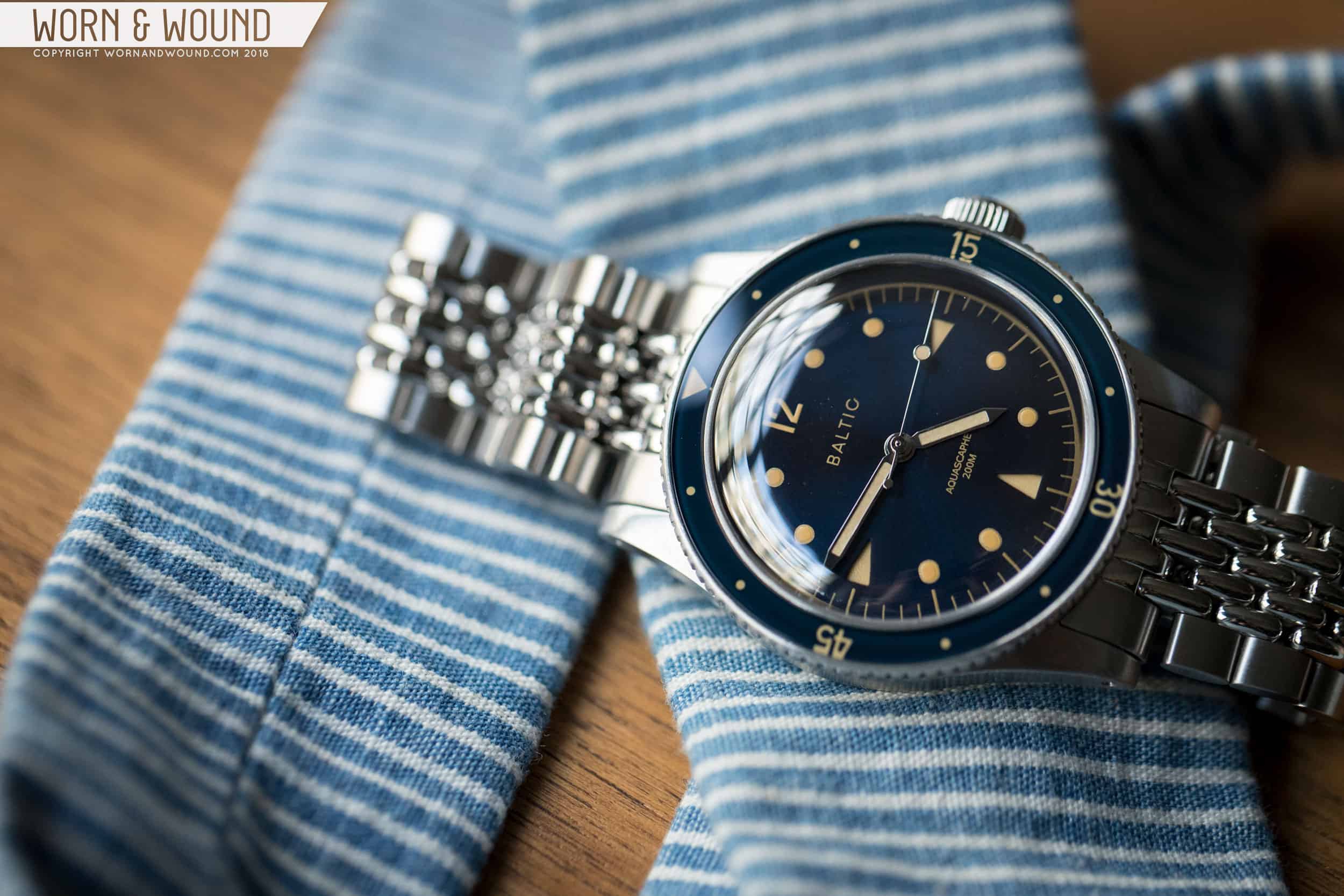
Based on mid-century dive watches, the Aquascaphe mixes a keen eye for details and style with the increased stats sought of a solid tool watch, such as a sapphire crystal and bezel, screw down crown, and 200 meters of water resistance. Though this is a new model for the brand, Baltic didn’t entirely return to the drawing board. There is a common design language here shared with past models, resulting in a familial look and, more importantly, the same mid-case design. The Aquascaphe is a winner at 38 millimeters across (39 at the bezel), 47 millimeters lug-to-lug, and 12 millimeters thick. Baltic nailed the details and case proportions here, giving the watch an attractive, vintage look and also making it enjoyable to wear.









 Featured Videos
Featured Videos




